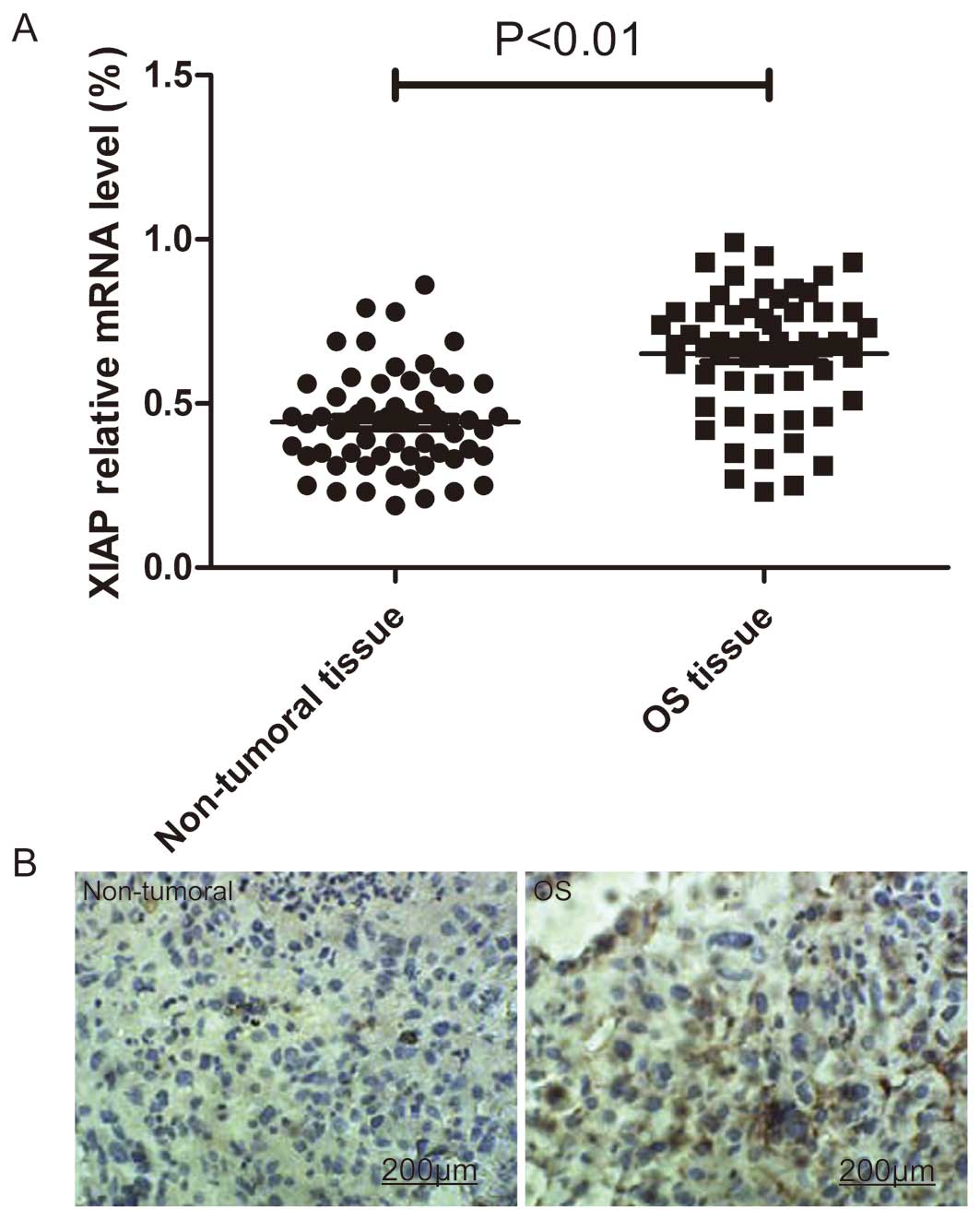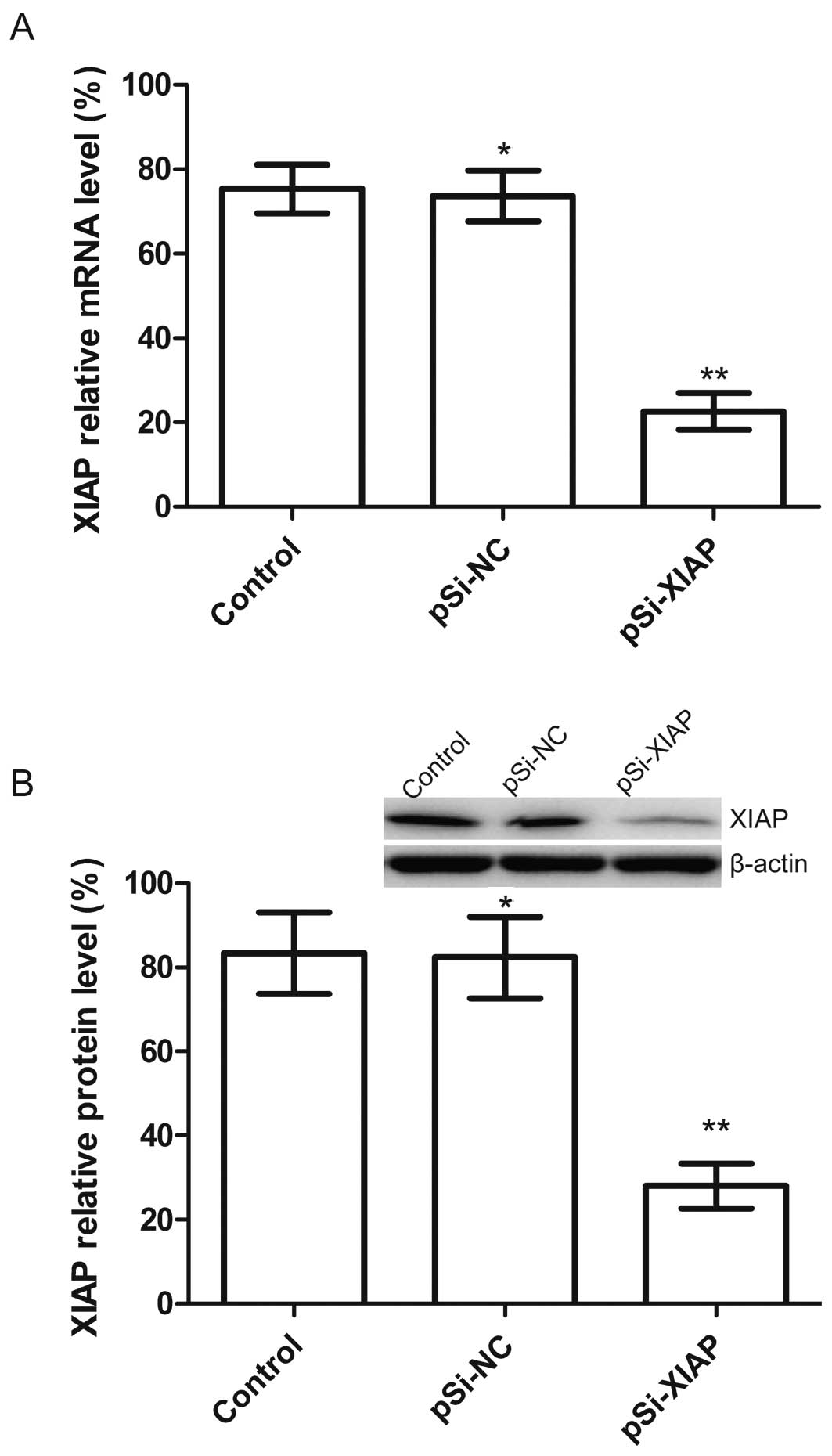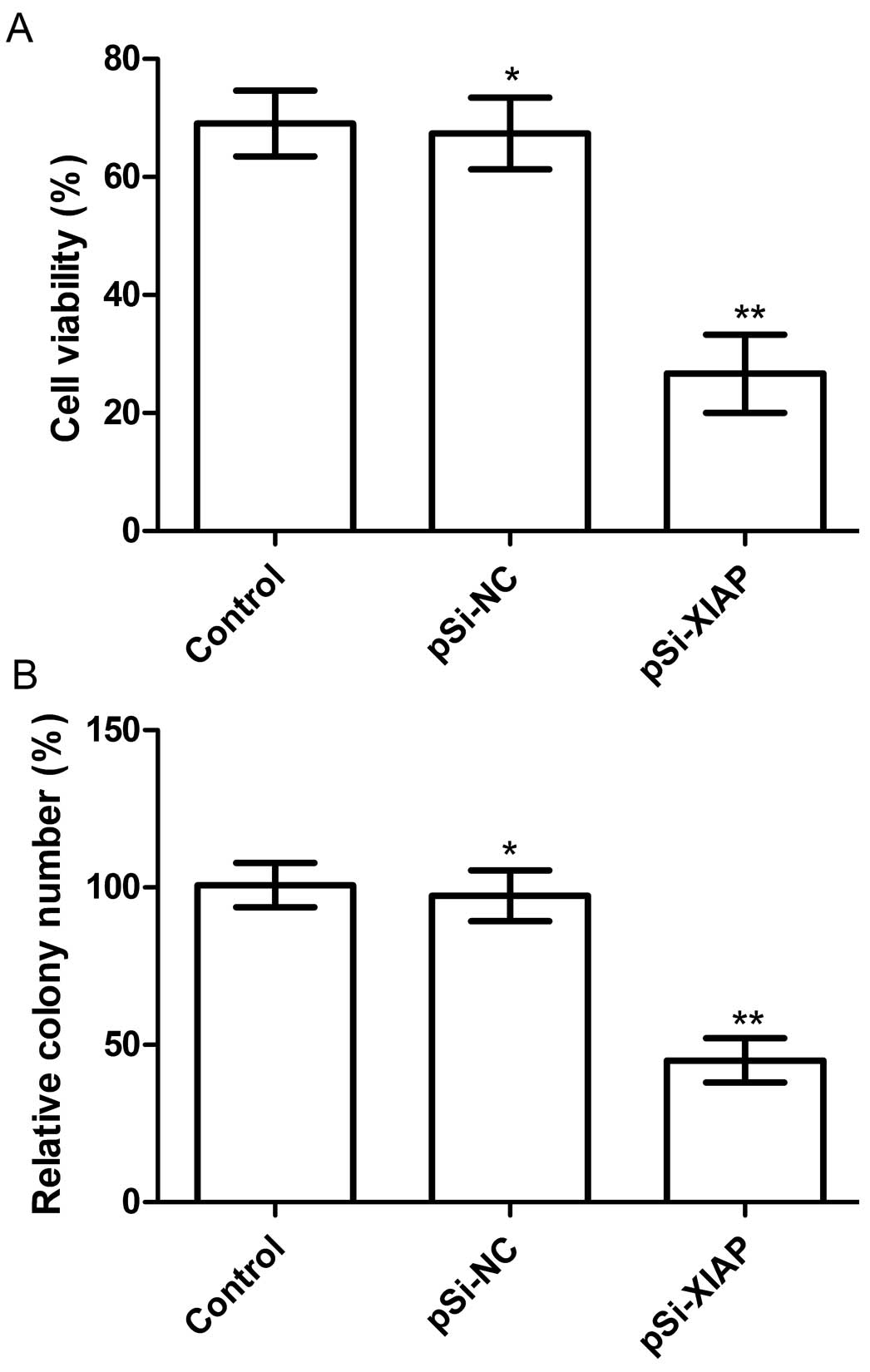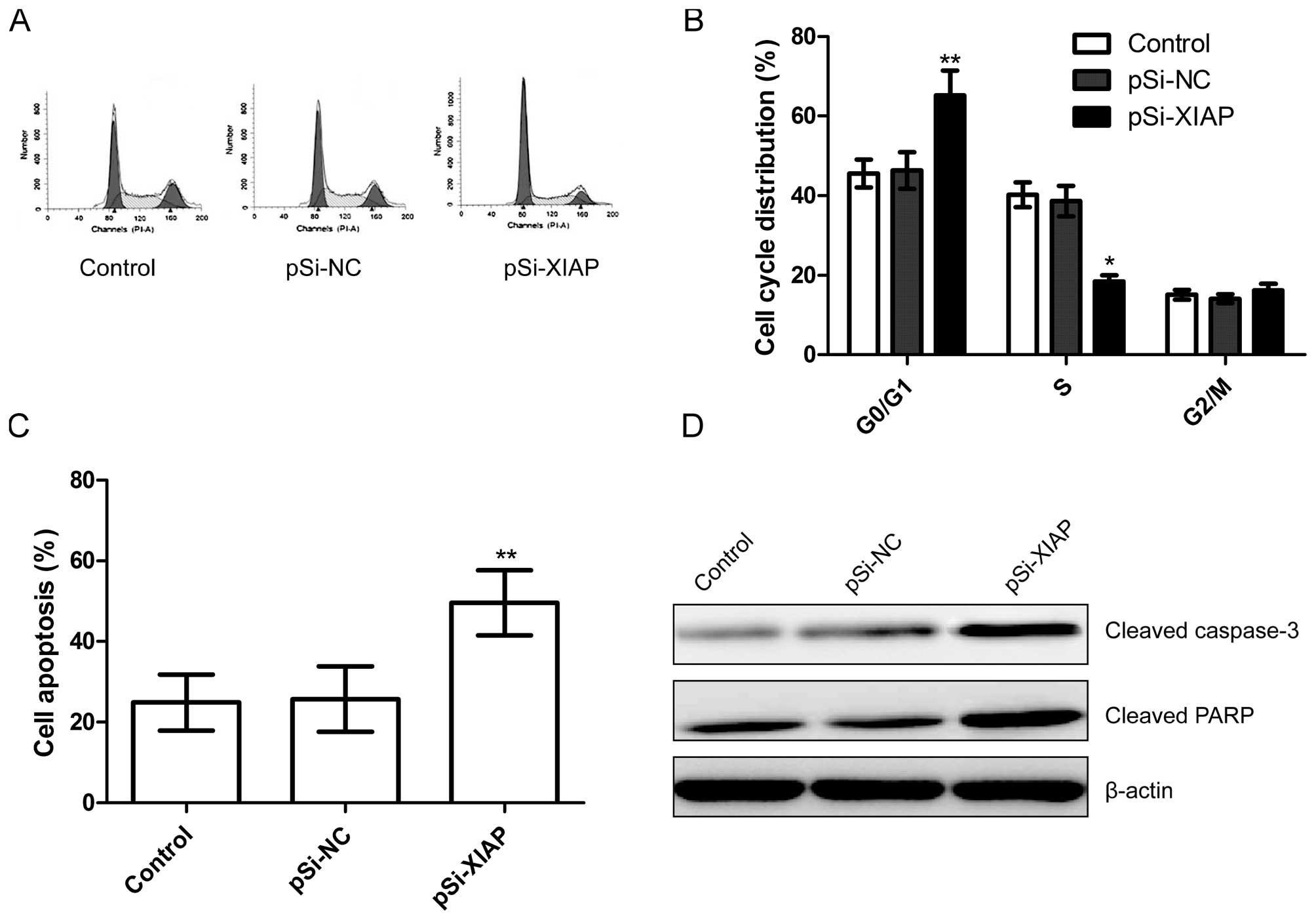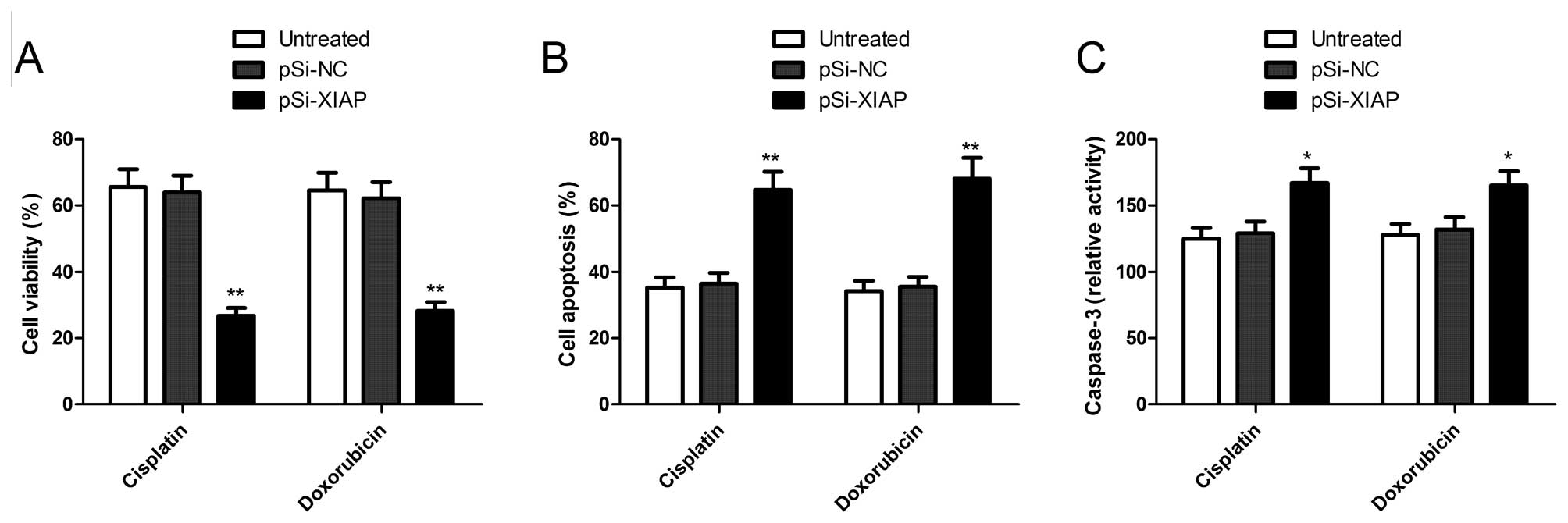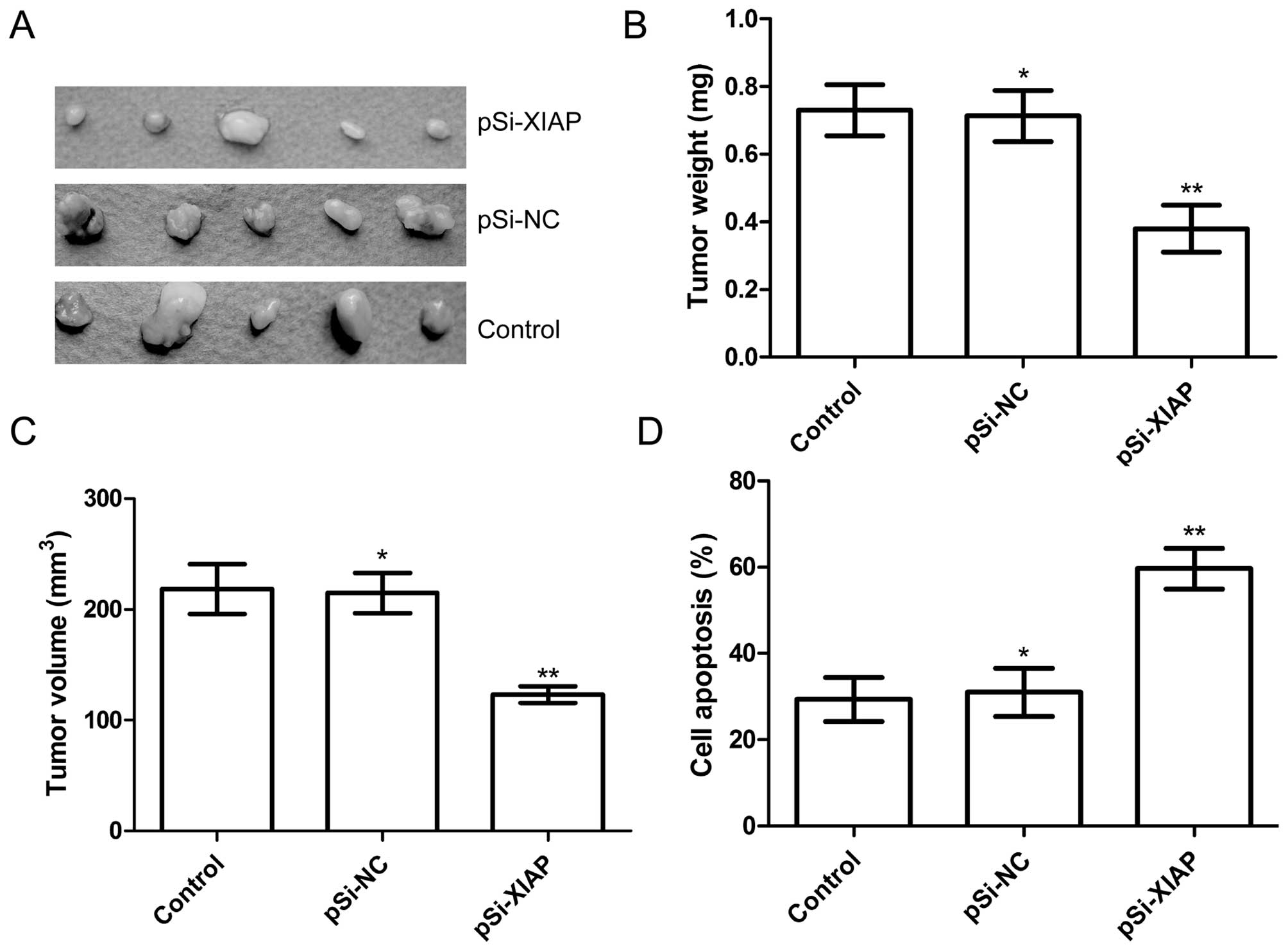|
1
|
Ottaviani G, Robert RS, Huh WW, Palla S
and Jaffe N: Sociooccupational and physical outcomes more than 20
years after the diagnosis of osteosarcoma in children and
adolescents: limb salvage versus amputation. Cancer. 119:3727–3736.
2013.PubMed/NCBI
|
|
2
|
Ottaviani G and Jaffe N: The epidemiology
of osteosarcoma. Cancer Treat Res. 152:3–13. 2009. View Article : Google Scholar
|
|
3
|
Wittig JC, Bickels J, Priebat D, et al:
Osteosarcoma: a multidisciplinary approach to diagnosis and
treatment. Am Fam Physician. 65:1123–1132. 2002.PubMed/NCBI
|
|
4
|
Meyers PA, Schwartz CL, Krailo M, et al:
Osteosarcoma: a randomized, prospective trial of the addition of
ifosfamide and/or muramyl tripeptide to cisplatin, doxorubicin, and
high-dose methotrexate. J Clin Oncol. 23:2004–2011. 2005.
View Article : Google Scholar : PubMed/NCBI
|
|
5
|
Yang J and Zhang W: New molecular insights
into osteosarcoma targeted therapy. Curr Opin Oncol. 25:398–406.
2013. View Article : Google Scholar : PubMed/NCBI
|
|
6
|
Zhao Z, Tao L, Shen C, Liu B, Yang Z and
Tao H: Silencing of Barkor/ATG14 sensitizes osteosarcoma cells to
cisplatin-induced apoptosis. Int J Mol Med. 33:271–276. 2014.
|
|
7
|
Mobahat M, Narendran A and Riabowol K:
Survivin as a preferential target for cancer therapy. Int J Mol
Sci. 15:2494–2516. 2014. View Article : Google Scholar : PubMed/NCBI
|
|
8
|
Wang S, Bai L, Lu J, Liu L, Yang CY and
Sun H: Targeting inhibitors of apoptosis proteins (IAPs) for new
breast cancer therapeutics. J Mammary Gland Biol Neoplasia.
17:217–228. 2012. View Article : Google Scholar : PubMed/NCBI
|
|
9
|
Salvesen GS and Duckett CS: IAP proteins:
blocking the road to death’s door. Nat Rev Mol Cell Biol.
3:401–410. 2002. View
Article : Google Scholar : PubMed/NCBI
|
|
10
|
Devi GR: XIAP as target for therapeutic
apoptosis in prostate cancer. Drug News Perspect. 17:127–134. 2004.
View Article : Google Scholar : PubMed/NCBI
|
|
11
|
Stennicke HR, Ryan CA and Salvesen GS:
Reprieval from execution: the molecular basis of caspase
inhibition. Trends Biochem Sci. 27:94–101. 2002. View Article : Google Scholar : PubMed/NCBI
|
|
12
|
Holcik M, Gibson H and Korneluk RG: XIAP:
apoptotic brake and promising therapeutic target. Apoptosis.
6:253–261. 2001. View Article : Google Scholar : PubMed/NCBI
|
|
13
|
Ma JJ, Chen BL and Xin XY: XIAP gene
downregulation by small interfering RNA inhibits proliferation,
induces apoptosis, and reverses the cisplatin resistance of ovarian
carcinoma. Eur J Obstet Gynecol Reprod Biol. 146:222–226. 2009.
View Article : Google Scholar : PubMed/NCBI
|
|
14
|
Yamaguchi Y, Shiraki K, Fuke H, et al:
Targeting of X-linked inhibitor of apoptosis protein or survivin by
short interfering RNAs sensitize hepatoma cells to TNF-related
apoptosis-inducing ligand- and chemotherapeutic agent-induced cell
death. Oncol Rep. 14:1311–1316. 2005.PubMed/NCBI
|
|
15
|
Jiang C, Yi XP, Shen H and Li YX:
Targeting X-linked inhibitor of apoptosis protein inhibits
pancreatic cancer cell growth through p-Akt depletion. World J
Gastroenterol. 18:2956–2965. 2012. View Article : Google Scholar : PubMed/NCBI
|
|
16
|
Kwatra SG: Targeting x-linked inhibitor of
apoptosis protein for melanoma therapy: the need for more
homogeneous samples and the importance of cell lines. J Invest
Dermatol. 131:7972011. View Article : Google Scholar
|
|
17
|
Hiscutt EL, Hill DS, Martin S, et al:
Targeting X-linked inhibitor of apoptosis protein to increase the
efficacy of endoplasmic reticulum stress-induced apoptosis for
melanoma therapy. J Invest Dermatol. 130:2250–2258. 2010.
View Article : Google Scholar : PubMed/NCBI
|
|
18
|
Mastrangelo E, Cossu F, Milani M, et al:
Targeting the X-linked inhibitor of apoptosis protein through
4-substituted azabicyclo[5.3.0]alkane smac mimetics. Structure,
activity, and recognition principles. J Mol Biol. 384:673–689.
2008. View Article : Google Scholar : PubMed/NCBI
|
|
19
|
Harlin H, Reffey SB, Duckett CS, Lindsten
T and Thompson CB: Characterization of XIAP-deficient mice. Mol
Cell Biol. 21:3604–3608. 2001. View Article : Google Scholar : PubMed/NCBI
|
|
20
|
Deveraux QL and Reed JC: IAP family
proteins - suppressors of apoptosis. Genes Dev. 13:239–252. 1999.
View Article : Google Scholar : PubMed/NCBI
|
|
21
|
Cheng JQ, Jiang X, Fraser M, et al: Role
of X-linked inhibitor of apoptosis protein in chemoresistance in
ovarian cancer: possible involvement of the phosphoinositide-3
kinase/Akt pathway. Drug Resist Updat. 5:131–146. 2002. View Article : Google Scholar : PubMed/NCBI
|
|
22
|
Gagnon V, Van Themsche C, Turner S,
Leblanc V and Asselin E: Akt and XIAP regulate the sensitivity of
human uterine cancer cells to cisplatin, doxorubicin and taxol.
Apoptosis. 13:259–271. 2008. View Article : Google Scholar
|
|
23
|
Holt SV, Brookes KE, Dive C and Makin GW:
Down-regulation of XIAP by AEG35156 in paediatric tumour cells
induces apoptosis and sensitises cells to cytotoxic agents. Oncol
Rep. 25:1177–1181. 2011.PubMed/NCBI
|
|
24
|
Zhang Y, Wang Y, Gao W, et al: Transfer of
siRNA against XIAP induces apoptosis and reduces tumor cells growth
potential in human breast cancer in vitro and in vivo. Breast
Cancer Res Treat. 96:267–277. 2006. View Article : Google Scholar
|
|
25
|
Oberoi-Khanuja TK, Murali A and Rajalingam
K: IAPs on the move: role of inhibitors of apoptosis proteins in
cell migration. Cell Death Dis. 4:e7842013. View Article : Google Scholar : PubMed/NCBI
|
|
26
|
Hunter AM, LaCasse EC and Korneluk RG: The
inhibitors of apoptosis (IAPs) as cancer targets. Apoptosis.
12:1543–1568. 2007. View Article : Google Scholar : PubMed/NCBI
|
|
27
|
Berthelet J and Dubrez L: Regulation of
apoptosis by inhibitors of apoptosis (IAPs). Cells. 2:163–187.
2013. View Article : Google Scholar : PubMed/NCBI
|
|
28
|
Schimmer AD: Inhibitor of apoptosis
proteins: translating basic knowledge into clinical practice.
Cancer Res. 64:7183–7190. 2004. View Article : Google Scholar : PubMed/NCBI
|
|
29
|
Carter BZ, Kornblau SM, Tsao T, et al:
Caspase-independent cell death in AML: caspase inhibition in vitro
with pan-caspase inhibitors or in vivo by XIAP or Survivin does not
affect cell survival or prognosis. Blood. 102:4179–4186. 2003.
View Article : Google Scholar : PubMed/NCBI
|
|
30
|
Abe S, Nishimoto Y, Isu K, Ishii T and
Goto T; Japanese Musculoskeletal Oncology G. Preoperative cisplatin
for initial treatment of limb osteosarcoma: its local effect and
impact on prognosis. Cancer Chemother Pharmacol. 50:320–324. 2002.
View Article : Google Scholar : PubMed/NCBI
|
|
31
|
Anninga JK, Gelderblom H, Fiocco M, et al:
Chemotherapeutic adjuvant treatment for osteosarcoma: where do we
stand? Eur J Cancer. 47:2431–2445. 2011. View Article : Google Scholar : PubMed/NCBI
|
|
32
|
Chou AJ and Gorlick R: Chemotherapy
resistance in osteosarcoma: current challenges and future
directions. Expert Rev Anticancer Ther. 6:1075–1085. 2006.
View Article : Google Scholar : PubMed/NCBI
|
|
33
|
Li J, Feng Q, Kim JM, et al: Human ovarian
cancer and cisplatin resistance: possible role of inhibitor of
apoptosis proteins. Endocrinology. 142:370–380. 2001.PubMed/NCBI
|
|
34
|
Miyamoto M, Takano M, Iwaya K, et al:
X-chromosome-linked inhibitor of apoptosis as a key factor for
chemoresistance in clear cell carcinoma of the ovary. Br J Cancer.
110:2881–2886. 2014. View Article : Google Scholar : PubMed/NCBI
|
|
35
|
Cheng YJ, Jiang HS, Hsu SL, et al:
XIAP-mediated protection of H460 lung cancer cells against
cisplatin. Eur J Pharmacol. 627:75–84. 2010. View Article : Google Scholar
|
|
36
|
Weiss RB: The anthracyclines: will we ever
find a better doxorubicin? Semin Oncol. 19:670–686. 1992.PubMed/NCBI
|
|
37
|
Carvalho C, Santos RX, Cardoso S, et al:
Doxorubicin: the good, the bad and the ugly effect. Curr Med Chem.
16:3267–3285. 2009. View Article : Google Scholar : PubMed/NCBI
|
|
38
|
Nobuto H, Sugita T, Kubo T, et al:
Evaluation of systemic chemotherapy with magnetic liposomal
doxorubicin and a dipole external electromagnet. Int J Cancer.
109:627–635. 2004. View Article : Google Scholar : PubMed/NCBI
|



